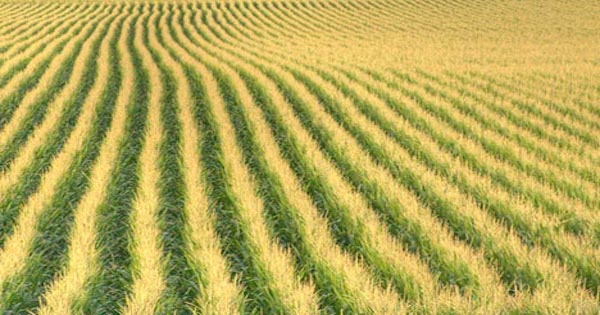Aphids are a perennial headache for corn growers, and this summer, it seems that many growers may have more reason to worry than usual.
Drought has created fertile conditions for the small, soft-bodied insects to thrive among maturing corn. If the emergence of corn-leaf aphids and bird cherry-oat aphids in west-central Nebraska is any indication, growers need to be extra vigilant this season. As corn reaches prime conditions for corn aphids infestation, many growers risk potentially significant crop losses if they’re caught off guard by this resilient insect.
Identifying corn aphids starts with color. Bird-cherry oat aphids are reddish-green (hence the “cherry” in the name) with similarly colored legs and cornicles. Corn leaf aphids, on the other hand, tend to be blush-green with black legs and cornicles and may coexist in the same field alongside other aphid species.
Aphids typically gather in large clusters, attaching their mouths to plant tissue to feed on the liquids inside. If they’re present, they can exist anywhere on the plant — whorls, tassels, upper leaves, ear leaves, stalks, and husks can all host aphid clusters.
The aphid threat is usually more pronounced around the edges of the field, with less activity toward the interior. When scouting and monitoring, examine at least 50 plants in the field — a large sample is critical for determining the following steps and treatment.
Growers face the greatest risk when the corn whorl is still in the tassel — during this stage, corn aphids can do the most damage. Physical signs of damage include wilting, curling, and yellowing of the plant and can also have the presence of honeydew created by the aphids, which produce a sooty mold. If pollination is less than half complete or if the infestation covers more than half the plant, treatment is likely needed.
Finally, it’s never too early to think ahead. If aphids emerge this year, it’s vital to consider biological controls for future seasons. Lady beetles, minute pirate bugs, and lacewings are known predators of aphids, so choose mitigation methods that spare these insects. Additionally, monitoring for parasitoid wasps in future seasons can save your corn field from having to deal with the “aphid mummies” that can result.
If you’re a grower looking to identify, control, or get ahead of next year’s insect threat, you may need assistance in developing a more comprehensive plan. John Deere has the sprayers, applicators, floaters, and spreaders to get the job done should insects threaten your corn harvest this season — find your nearest dealer today.
